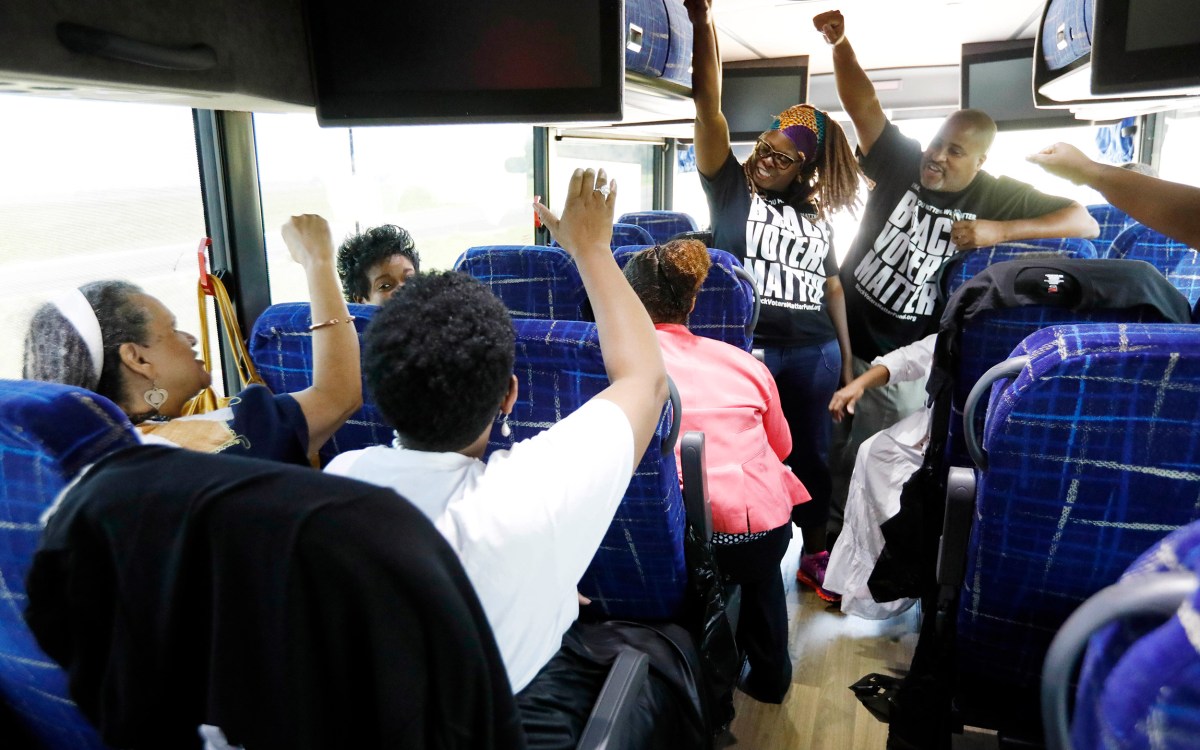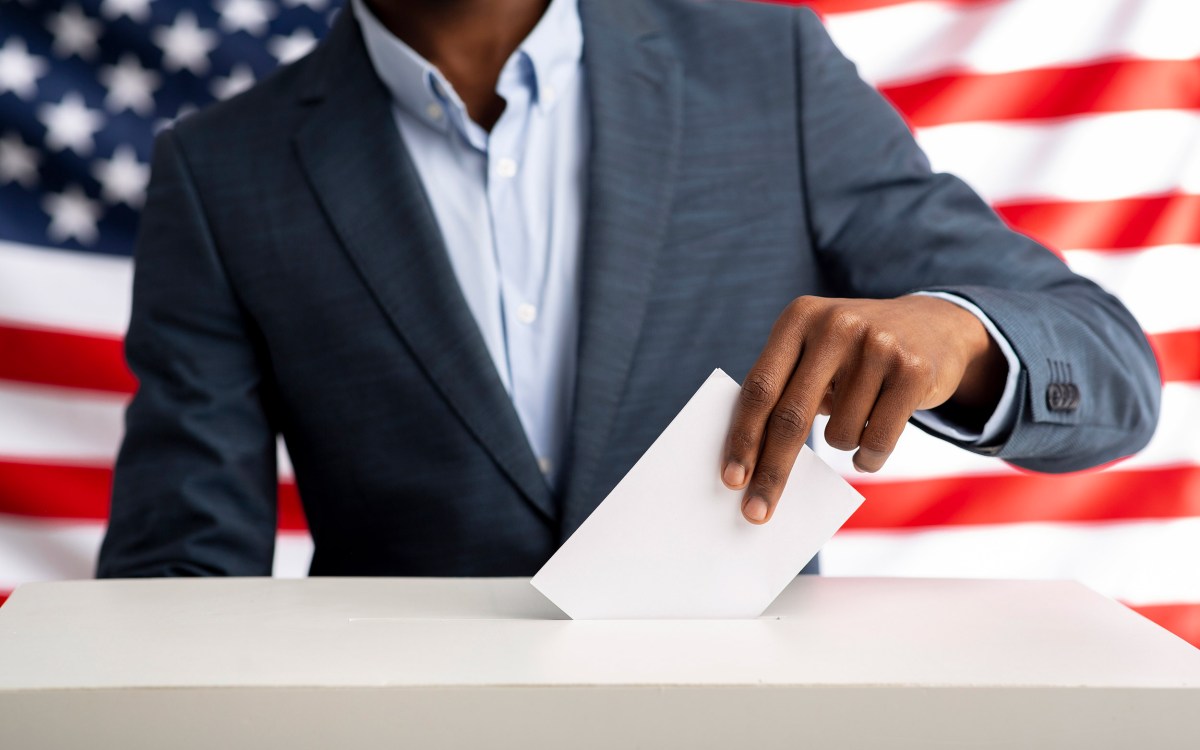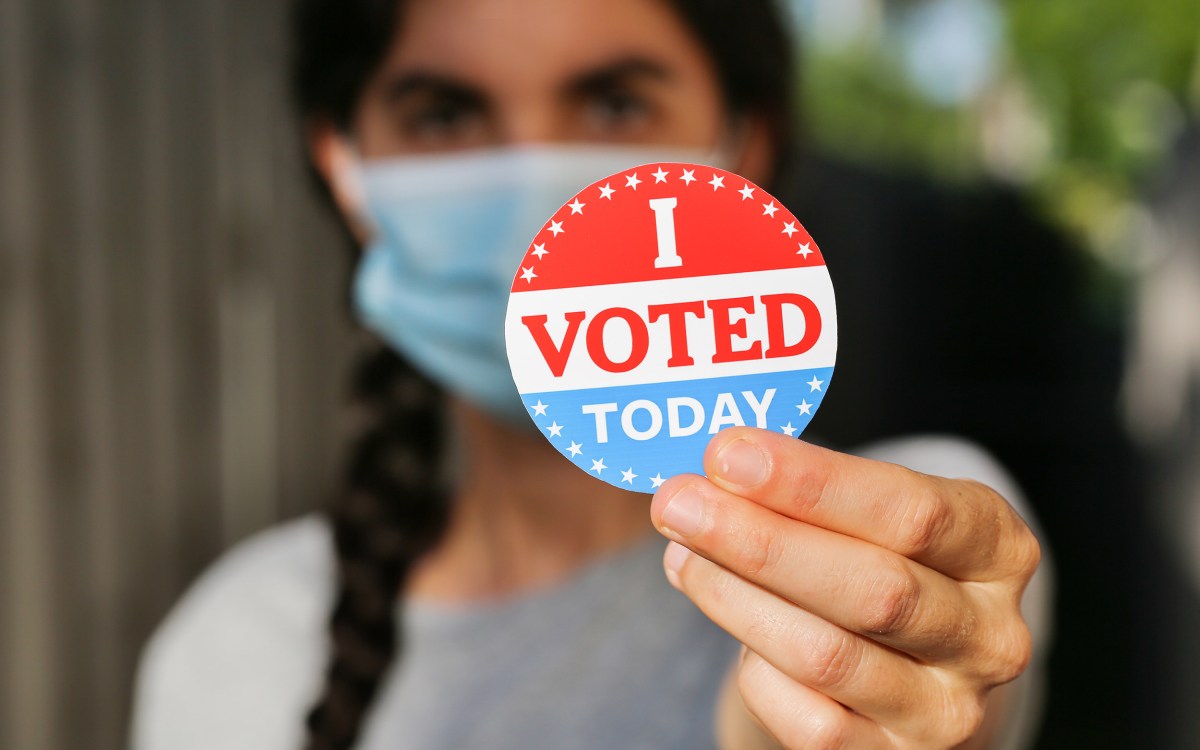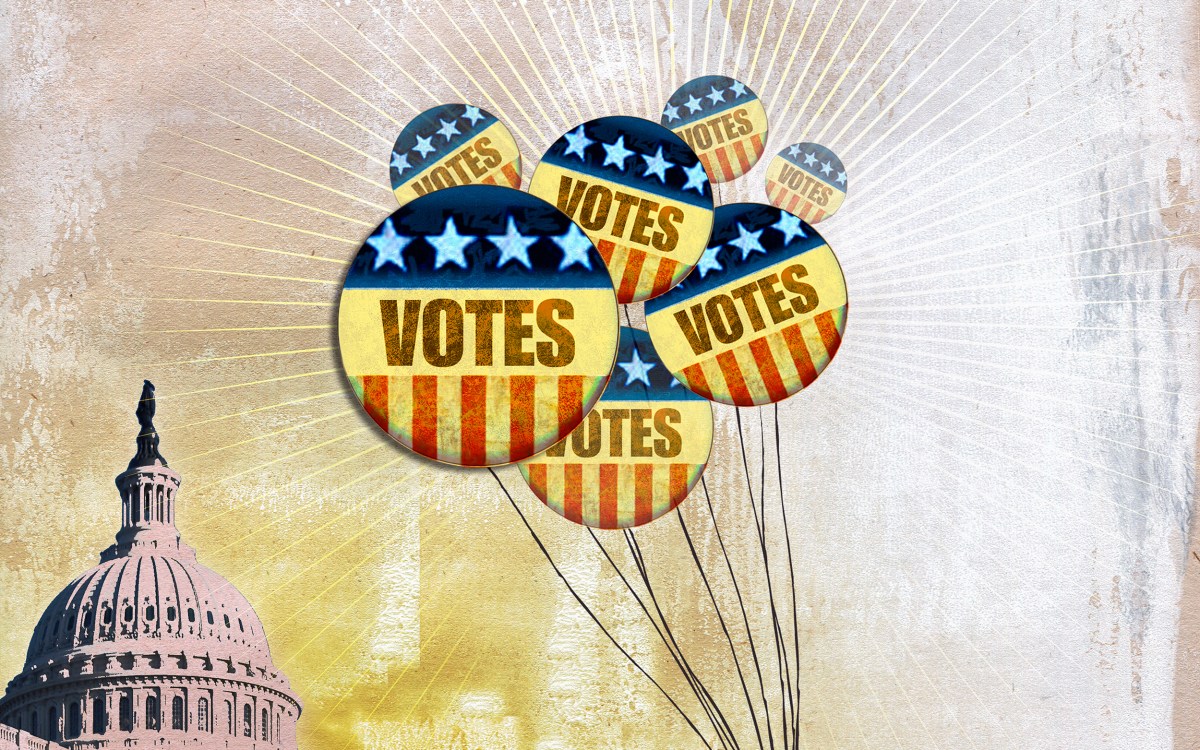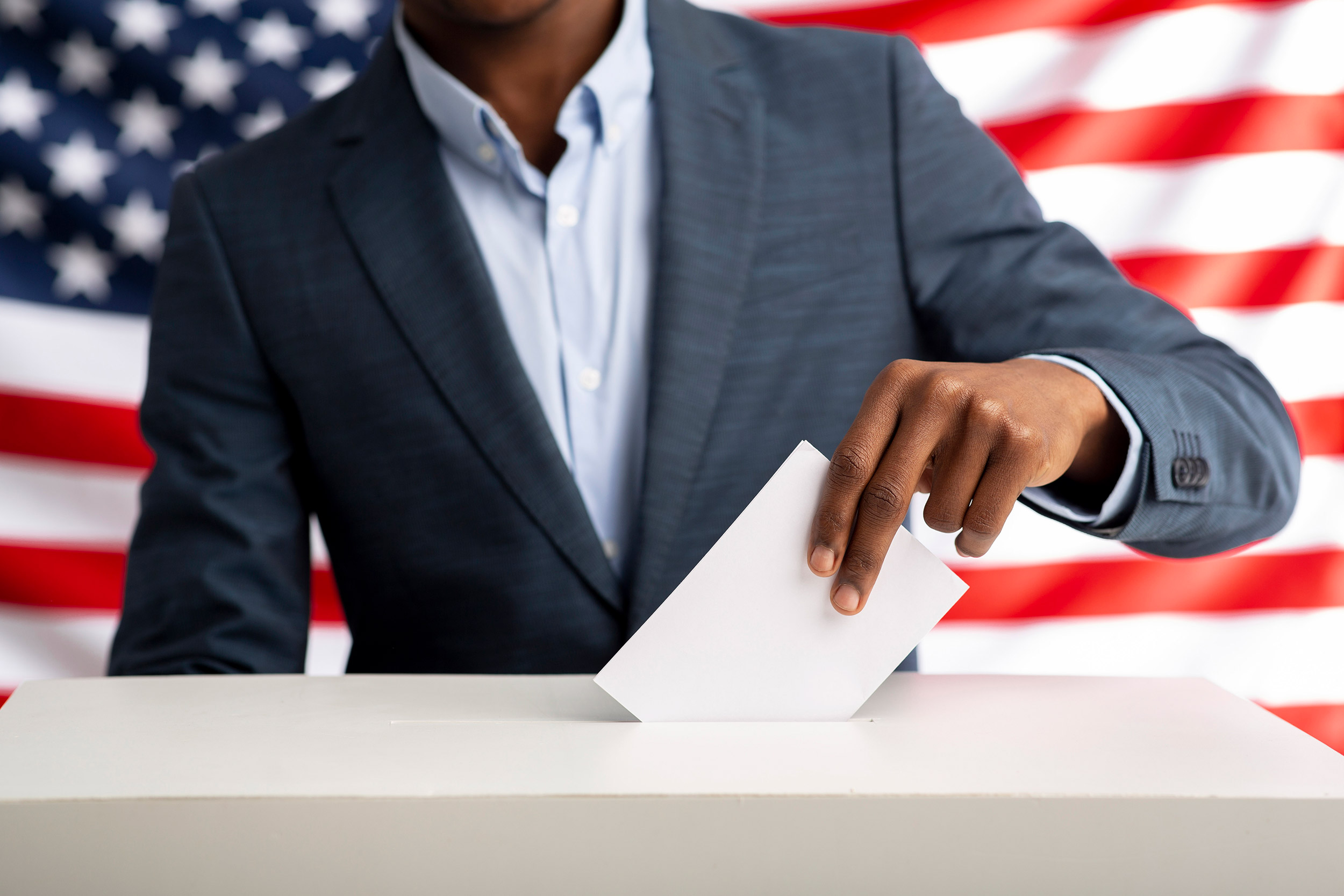
iStock
Fighting for equality at the ballot box
Law School students, affiliates battle gerrymandering, bars to access
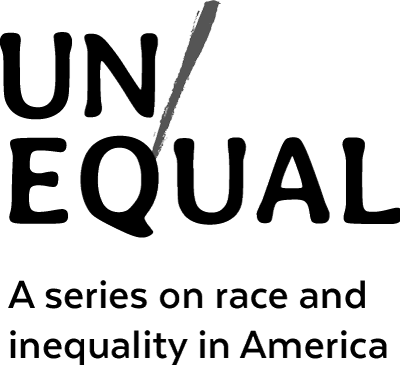
“Unequal” is a multipart series highlighting the work of Harvard faculty, staff, students, alumni, and researchers on issues of race and inequality across the U.S. The second part explores the experience of people of color with democracy in America.
The American experiment of allowing a people to govern themselves was a radical idea in the history of the world. And sitting at the heart of the nation’s representative democracy, enshrined in the Constitution, is the right to vote. It is sacred, fundamental, and still not absolutely guaranteed for all communities across the country.
“When I think about the experience of minority voters in the United States, a lot of what we’re talking about are standard things that we think about when we think of the Voting Rights Act,” said Sarah Gonski, J.D. ’15, a Harvard Law School alum and voting rights advocate, of the 1965 landmark federal legislation that prohibited racial discrimination in voting. “Jim Crow era segregation, the experience of Black Americans in the South who were given literacy tests — that type of discrimination in voting and even intentional discrimination in voting — is alive and well.”
In the November election, voters in various states faced barriers — many of them appearing to target communities of color — such as aggressive purging of voter lists (often without notifying individuals affected), restrictions on early and absentee voting, strict photo ID requirements (coupled with closing driver’s license offices in predominantly minority neighborhoods), and others. But those strategies were met by others, from lawyers and activists, who worked to ensure voters got the chance to mark their ballots, have them counted, and exert due political influence.
That is exactly the work that Gonski is doing in Arizona, which is home to 22 Native American reservations. It is not uncommon for those who live on tribal lands to have polling places as far as 60 miles away on Election Day. Many tribal communities also do not have federally standardized mailing addresses, making mail-in voting or even locating voting precincts difficult.
“I want to tell every disillusioned person who is waffling on whether to participate in the process for the first time or wondering whether to keep participating in a process that feels like it’s stacked against them, we’re on the watch.”
Sarah Gonski, J.D. ’15, voting rights advocate
A political law associate at Perkins Coie, Gonski works on voting rights litigation for the Democratic Party, representing the various branches of the organization, members of Congress, and nonprofits doing work around voting rights and election law.
“We do a lot in terms of making sure that minority voters in particular aren’t disproportionately blocked by some of the barriers put up to vote,” Gonski said. “And they just unquestionably are. The data is clear; the statistics are clear, in case after case.”
Beyond barriers to simply cast a ballot, many communities of color find the power of their votes blunted by gerrymandering. The Voting Rights Act outlawed redrawing district lines to hamper representation of communities of color, but not for purely partisan reasons. Political gerrymandering typically seeks either to break up and water down geographic voting blocs or to consolidate them and lessen competition in surrounding areas. Much of the nation’s housing is racially segregated, and since Black, Latinx, and Asian voters historically lean Democratic, communities of color are often targeted for gerrymandering.
https://www.youtube.com/watch?v=bKPt_2MCFx0&ab_channel=HarvardLawSchool
Issues like gerrymandering are exactly what students at the Voting Rights Litigation and Advocacy Clinic at Harvard Law School are helping build cases against. Led by veteran voting rights litigator Ruth Greenwood, the program places students on cases that challenge inequalities in the voting system around the country.
More like this
“[My work] has two goals: trying to get partisanship out of redistricting, and then also to improve minority representation,” said Greenwood. “Once you get rid of the structural skew in legislative bodies, then so many more policies can follow in the chain. You won’t need to convince a supermajority of people; you just need to have legislators who reflect the will of the majority of people.”
She noted that the work that she and her students do in the courtroom is only a small part of the decades-long struggle for equality at the ballot box in the U.S., and that to make progress, it is critical for lawyers to understand their role.
“We try to have [students] look at the whole structure of voting rights litigation as part of a movement,” she said. “We need more than just litigation to get success in these things. … I try to encourage my students to appreciate that they need to understand organizing, social movements, communications — [it takes] multidimensional advocacy.”
The clinic’s work extends to every level of government and representation. Omeed Alerasool, a second-year law student in the clinic, worked on a case in Virginia Beach, Va., where he helped argue that the City Council’s election structure disenfranchises communities of color. Instead of electing members to represent specific neighborhoods, councilors are elected city-wide. The case Alerasool supported argues that process disenfranchises the city’s residents of color because it acts as a barrier for equal representation: The voting district’s city-wide design prevents those residents from electing members from their neighborhoods.
“Black voters, Latino voters, Asian voters — they aren’t able to elect candidates that they would like to elect, so the issues that they care about can’t get to the forefront of the City Council unless the City Council chooses to do so,” he says. “[The communities] don’t have the backstop of electing a candidate who will bring exactly the issue that they think is worth addressing.”
On the other side of the country, second-year student Amy Frieder worked on a case involving age discrimination at the ballot box. In the suit, she helped argue that Alaska’s mail-in voting system favored people over 65, who were automatically sent a mail-in ballot for the 2020 election cycle. The state did not grant voters under 65 the same benefit, which Frieder argued made it harder for them to have an equal say in the balloting.
“The crux of our claims were related to the 26th amendment, which says that the right to vote shall not be denied or abridged for people 18 or older,” said Frieder. “We were arguing that [making it] easier for some people to vote than others is an abridgment of the right to vote because you have to compare [people’s rights].”
Alerasool and Frieder’s fights are only the most recent pieces of the work for equality at the ballot box. According to the Brennan Center for Justice, since the beginning of 2021 more than 100 bills have been filed in 26 states across the country aimed at restricting voter rights.
Collectively, it is a challenge that election attorneys stand ready to tackle. But as they do, Gonski argues that one of the most important things to do is to not give up hope.
“I want to tell every disillusioned person who is waffling on whether to participate in the process for the first time or wondering whether to keep participating in a process that feels like it’s stacked against them, we’re on the watch.
“Somebody is actively in there, fighting for you. It’s me; it’s my team; it’s the whole Civil Rights community; it’s the whole voting rights community; it’s clients of all nonpartisan organizations. There are people out there who are awake at 3 a.m. wondering how to fix this and how to make voting and the democratic process a little bit easier.”



